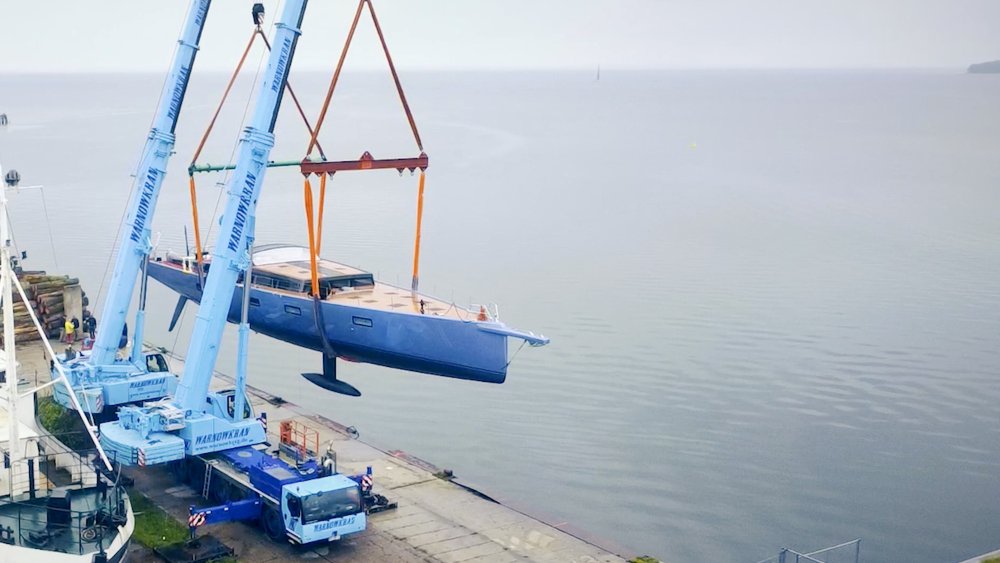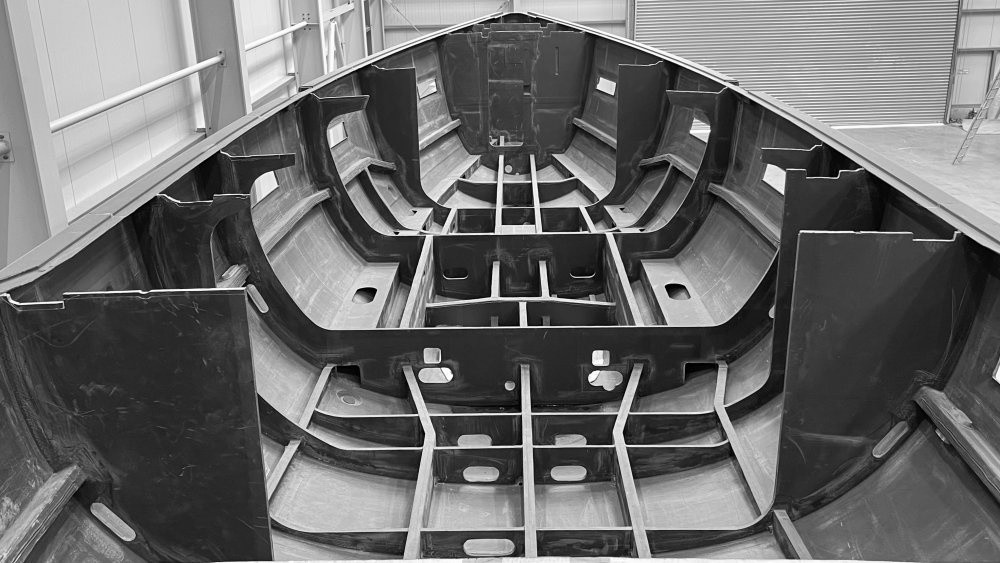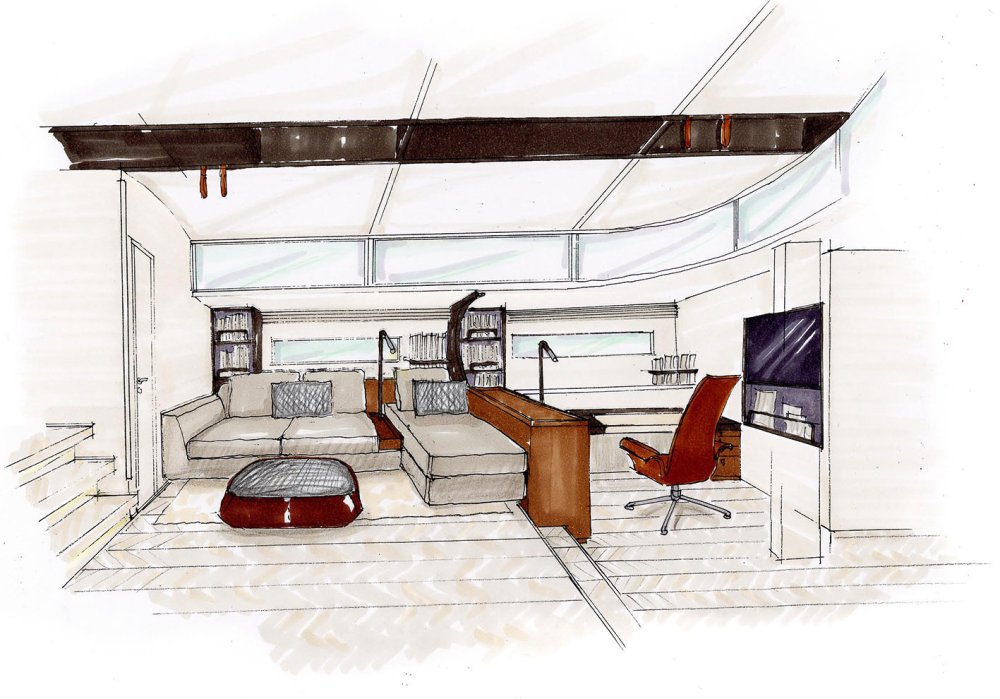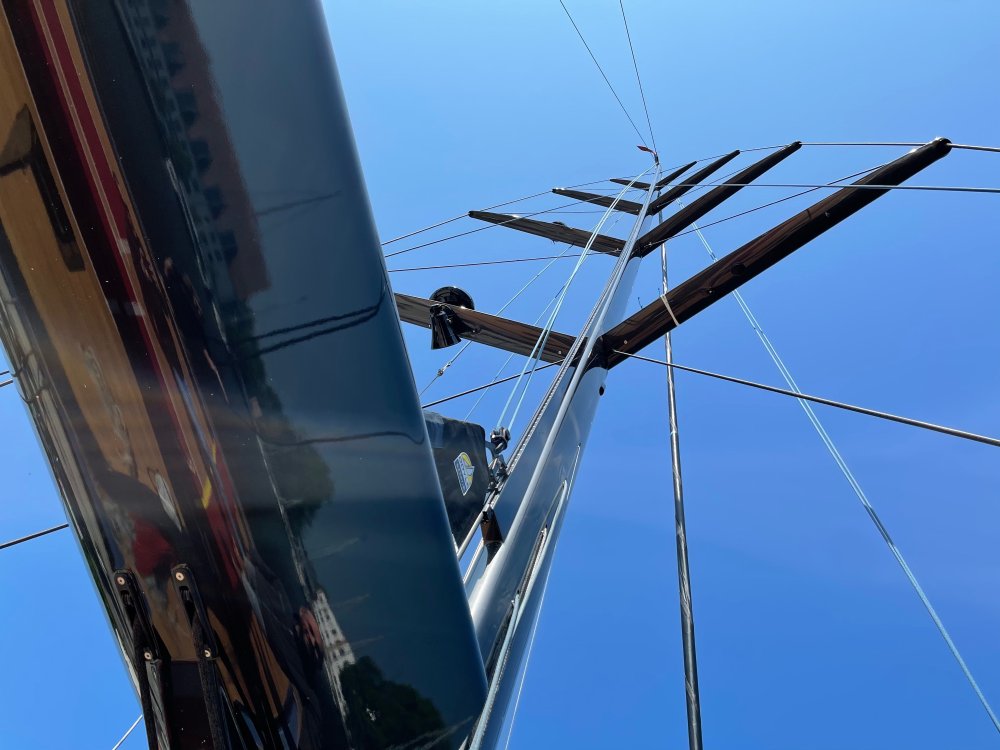Passion and efficiency
This is the only way we can implement our philosophy: Lightweight construction goes hand in hand with more sailing fun and, above all, is more sustainable. When other yachts are still under engine, the sails are already set on a YYacht.
Each yacht is oven-tempered to permanently bond the many layers of carbon fibre and resin together and give the hull strength and stability. The result: more sailing fun and at the same time a strong feeling of safety for our customers.
The highest possible construction quality is guaranteed by our team, which combines several decades of experience in yacht building. The common credo is simply formulated: Only yachts that we would sail around the world ourselves leave the shipyard.
Modern and technically mature
The production area is equipped with modern and technologically advanced systems. But at the same time simple and straightforward, to live up to the YYachts "keep it simple" philosophy. Wherever possible, processes are digitalised.
The YYachts hall is equipped with two powerful cranes that can lift 16 and ten tonnes respectively. They make it easy to lift and move the hulls and finished boats along the production line.
Mobile hovering scaffolds enable our specialists to work on the hull and interior at the same time. Our in-house joinery, centrally located in the production area, is equipped with the best equipment to realise any design specifications.




Fast and precise
Sophisticated planning also allows for a shorter delivery time and thus a smaller window of time from order placement to delivery of the yacht. Production times for the Y7 are around six months, for the Y8 eleven months and for the Y9, the YYachts' flagship, no more than 18 months.
The example of the engine room illustrates the way YYachts works. It is already being built parallel to the hull and is equipped with all the technical components required by the owner and the YYachts technicians on board. In the assembly phase, the entire pre-constructed engine room is installed in the space provided in the hull. Then first the propellers are added and connected to the propulsion systems via the shaft or sail drive, as are the electrical cables, piping and hydraulics.
the shipyard is at the sea

When hulls arrive at YYachts in their raw state, they have to be prepared before painting; painting is a demanding process that, after priming and primer coating, is completed with two more coats of topcoat and a transparent protective varnish.

The next step is to fix the layout and fit it into the fuselage. All electrical circuits must be installed, as well as the piping, motors and hydraulics. The deck is then fitted, which has previously been planked with teak or a wood of the owner's choice.

Once the deck is in place, it is time for the final assembly of the superstructure, the fittings on deck and the hydraulic system. At the same time, our carpenters finish the interior according to the interior designers' designs. This is what makes a YYacht unmistakably unique.

Subsequently, the furniture selected by the owner is installed. The final step is then the launching, which takes place in the waters outside the shipyard. Here, our experts set the mast and carbon boom and secure it with ultra-light rigs before the yacht is christened.
Every YYacht is tested by Michael Schmidt himself. He won’t limit to mild tests with little wind but thoroughly tests the boat's performance. Personally testing the boat's strength, reliability and behavior in strong winds. If the boat passes the tests and only after its approval, it can be handed over to the customer with the christening ceremony.